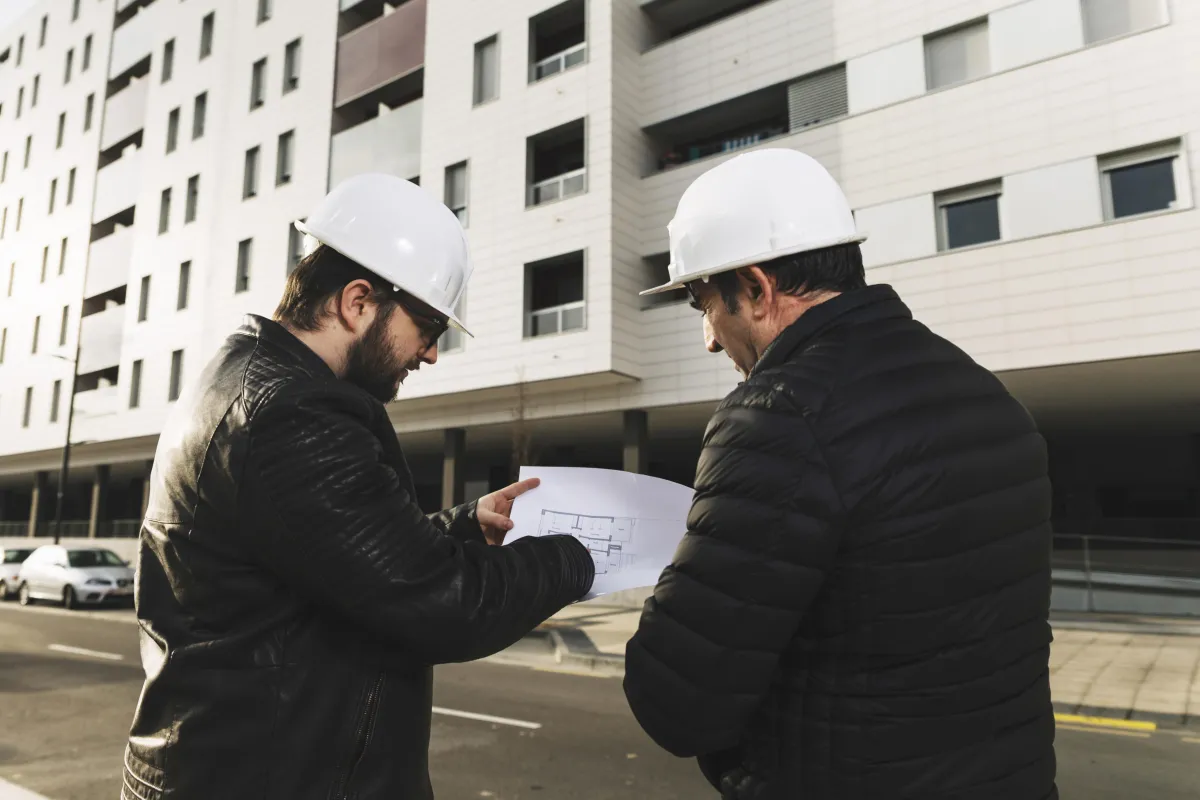Welcome to Our Blog
Insights and tips to keep your living environment safe and healthy.

Understanding Mold Inspection & Building Code Compliance
Mold Inspection and Its Relationship to Building Code Compliance
Mold growth in buildings presents serious health risks and structural challenges. As awareness of indoor air quality issues increases, the relationship between mold inspection and building code compliance has garnered significant attention. This comprehensive guide will discuss the importance of building code compliance, outline key steps in preventing mold growth, and examine how mold inspections play a crucial role in maintaining safe and healthy indoor environments, particularly in Santa Barbara.

Understanding Building Code Compliance
Building codes are regulations set by local, state, and federal governments that establish standards for construction and maintenance. These codes aim to ensure public health, safety, and welfare by creating safe, habitable environments. Among these regulations are provisions that address moisture control and indoor air quality, essential for preventing mold growth.
Importance of Compliance
Health Protection: Building codes are designed to protect the health of occupants by ensuring that structures are safe and free from hazards, including mold growth. Non-compliance can lead to serious health issues for residents, making adherence to these codes essential
Property Value: Compliance with building codes enhances property value. Non-compliant properties may face decreased marketability and lower resale values due to potential health hazards or legal issues
Legal Liability: Property owners can be held legally liable for health problems associated with mold exposure if their buildings do not comply with local codes. This can lead to costly lawsuits and damage claims
Insurance Implications: Insurance companies often require properties to meet building codes for coverage. Non-compliance may result in denied claims or higher premiums
Key Building Codes Related to Mold
Building codes often include provisions aimed at preventing mold growth and maintaining indoor air quality. Key aspects include:
1. Moisture Control
Building codes mandate measures to prevent moisture intrusion and accumulation within structures. This may include:
Drainage Systems: Proper grading and drainage systems are required to prevent water from pooling near the foundation
Waterproofing: Waterproofing materials are specified for basements and other moisture-prone areas to reduce the risk of mold growth
Humidity Control: Ventilation requirements in building codes help maintain optimal humidity levels, minimizing mold risks. Building Science Corporation
2. Ventilation Requirements
Building codes typically specify ventilation standards for residential and commercial properties to ensure adequate airflow and reduce humidity levels:
Exhaust Fans: Bathrooms and kitchens must have exhaust fans to eliminate excess moisture generated from activities like cooking and showering
Attic Ventilation: Adequate ventilation in attics helps dissipate heat and moisture, preventing mold growth in roof spaces. Building Science Corporation HVAC System Recommendations
3. Material Specifications
Some building codes specify the use of mold-resistant materials to mitigate mold growth:
Mold-Resistant Drywall: In moisture-prone areas, mold-resistant drywall can be used to reduce the likelihood of mold growth
Insulation: Certain insulation types are designed to resist moisture accumulation and mold growth
4. Repair and Remediation Standards
Building codes may also include guidelines for mold remediation in existing structures:
Safe Removal Practices: These guidelines dictate how to safely remove moldy materials and prevent spore release during the remediation process
Contaminated Material Disposal: Proper disposal procedures for contaminated materials are outlined to prevent cross-contamination
The Importance of Mold Inspections

Why Mold Inspections Are Necessary
Mold inspections are crucial for identifying existing mold problems and preventing future growth. Here are key reasons mold inspections are vital:
Identify Hidden Mold: Mold often grows in concealed areas, such as behind walls or under carpets. Regular inspections can reveal these hidden growths before they escalate
Assess Moisture Levels: Inspectors measure moisture levels in various materials to identify areas prone to mold growth, enabling proactive measures
Evaluate Air Quality: Mold inspectors often perform air quality tests to determine the concentration of mold spores in the indoor environment, ensuring a safe living space
Steps Involved in Mold Inspection
Visual Inspection: A thorough visual inspection of the property is the first step in identifying visible signs of mold growth. Inspectors look for discoloration, water stains, and musty odors
Moisture Assessment: Inspectors use moisture meters to measure the moisture content in building materials. High moisture levels can indicate potential mold growth
Air Sampling: Air samples are collected and analyzed to detect mold spores in the indoor environment. This helps assess overall air quality and identify specific mold types
Surface Sampling: Swabs, tapes, or bulk samples may be taken from surfaces to identify the presence and type of mold, providing more detailed information about the contamination
Reporting and Recommendations: After the inspection, a detailed report outlines
Mold Remediation and Building Code Compliance

Understanding Mold Remediation
Mold remediation is the process of removing mold from a property and addressing the underlying moisture issues that contributed to its growth. Proper remediation is critical to ensure compliance with building codes and protect the health of occupants
Steps in Mold Remediation
Assessment and Planning: A thorough assessment is conducted to determine the extent of mold growth and identify the source of moisture. A remediation plan is developed based on these findings
Containment: Affected areas are isolated to prevent the spread of mold spores during the remediation process. This may involve sealing off areas and using negative air pressure to contain the mold
Removal of Contaminated Materials: Moldy materials, such as drywall or carpeting, may need to be removed and disposed of properly to eliminate the source of contamination
Cleaning and Disinfection: All surfaces in the affected area are cleaned and disinfected using appropriate methods and chemicals to eliminate any remaining mold spores
Moisture Control Measures: After remediation, measures are taken to address the underlying moisture issues, such as repairing leaks, improving drainage, or enhancing ventilation
Final Inspection and Clearance Testing: A final inspection is conducted to ensure that all mold has been removed and that the area is safe for occupancy. Clearance testing may also be performed to confirm that mold levels are within acceptable limits
California Department of Public Health
Ensuring a Safe Environment: The Importance of Mold Inspection
Mold inspection is a critical aspect of maintaining a safe and healthy indoor environment, particularly concerning building code compliance. By understanding the importance of mold inspections, adhering to relevant building codes, and implementing effective remediation strategies, property owners can protect their health, preserve their property, and ensure compliance with regulations.
Take Action Against Mold: Contact Advanced Clean Air Solutions
Residents of Santa Barbara can rely on Advanced Clean Air Solutions for comprehensive mold inspection and remediation services. Our experienced team utilizes the latest techniques and equipment to ensure your property remains mold-free and compliant with all applicable building codes.
For property owners and managers, staying informed about mold inspection techniques and building code requirements is essential in the prevention and management of mold-related issues. Regular inspections, proactive measures, and timely remediation not only safeguard occupants but also enhance the long-term value of the property.
If you suspect mold growth in your property, don’t hesitate to contact Advanced Clean Air Solutions. Our professionals are ready to help ensure a healthier living and working environment for everyone.
Additional Resources
Copyright @ 2025 - All rights reserved
Advanced Clean Air Solutions, LLC
351 Paseo Nuevo 2nd Floor #1033
SANTA BARBARA, CA 93101

